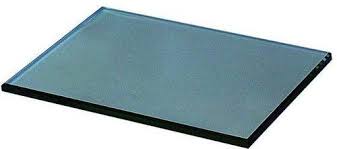Home Decor
M & S Reflective Glass
Reflective glass holds a significant place in the awe-inspiring universe of glass due to its superior aesthetics and stellar functionalities. It protects against solar glare, contributes to architectural aesthetics, and energy efficiency. The reflective glass reflects away a greater amount of heat as compared to ordinary float glass and is also less prone to thermal breakage.
What Is Reflective Glass?
Reflective glass is standard float or annealed glass with a thin metallic coating that provides it with a darker hue. The primary benefit of this type of glass is to help combat excessive solar glare. There are two methods through which reflective glass is manufactured.
1) Production Pyrolitic (On-Line)
In this method, the metal oxides responsible for tinting or shading are directly applied to the hot glass while it is still inside the annealing lehr (furnace). The coating is fused with the glass when the furnace is at around 1200°C. This process provides the glass pane strength and durability; it can be easily cut, drilled, heat strengthened or toughened afterwards. Coatings applied in this manner are called hard coatings and are relatively more sustainable and eco-friendly. This method is also cost-effective.
2) Vacuum (Magnetron) Process (Off-Line)
In this method, one or more metal oxide coatings is applied to finished glass by creating a vacuum. These coatings are softer and more susceptible to damage, which is why they are applied on the inner side of the glass panels. Their low resistance makes them more usable for double glazing. These soft coats are relatively more expensive as opposed to hard coats provided by the pyrolytic glass.
Benefits of Reflective Glass
As seen above, Reflective glass is a versatile material with multiple applications. Its prime advantage is that of significantly reducing solar glare absorption, but that is not all. Listed below are a few key benefits of installing reflective glass at your home or office.
Optical comfort
Coated reflective glass undoubtedly provides a more soothing atmosphere inside an office space by reducing the harsh solar glare. It is designed specifically for optimal sunlight infiltration. The tint or hue further eliminates the need to install blinds or window shutters inside a room, which means you get an enhanced sense of space. Reflective glass manufactured with a Low-E coating increases optical comfort and makes the building more energy-efficient. Energy efficiency makes a structure more sustainable, reduces energy bills, provides enhanced thermal comfort, reduces the need for artificial lighting, and much more.
Varied colour choices
Reflective glass is available in various shades such as bronze, silver, dark grey, green, dark blue, etc. You can choose a shade that best aligns with the colour of your structure’s framing, panelling, stonework, etc. Reflective glass panes also significantly reduce the HVAC (Heating Ventilation and Air Conditioning unit) costs and also enhancing their lifespan.
Ensures privacy
A certain type of thin metallic coating on the glass’s surface can also provide it with a one-way mirror effect, rendering it opaque for people standing on the outside looking in. This gives people on the inside of the glass structure privacy while letting them take advantage of the panoramic views of their external surroundings. People and vehicles on the outside can only see a reflection of themselves on the surface of such buildings.
Summer comfort
Reflective surfaces cut back on the solar glare and scorching heat but allow for tonnes of natural light to pass through, enhancing overall thermal comfort inside a building. This makes dwelling behind reflective glass very comfortable, especially during the sweltering summer months. If you work or live inside a structure that in the direct line of solar glare, reflective glass is the perfect solution for you.
Unsung health benefits
The hues on the reflective glass are not just for show. The coating protects the interiors of your building from absorbing harmful ultraviolet (UV) and infrared (IR) rays. This is not only beneficial for you but also your furnishings like upholstery, carpets, rugs, etc. Exposure to harsh sunlight routinely can cause these furnishings to fade quickly.
Applications of Reflective Glass
Glass with reflective coatings has found several applications in architecture. These coatings have high reflectance that provides UV and IR protection. Listed below are some of its applications for your reference.
Exterior applications
Reflective glass is widely used in exteriors of commercial façades, shopping malls, educational institutions, stand-alone storefronts, air traffic control towers, restaurants, hotel rooms, petrol bunk windows, and much more.
Interior Applications
Interior applications of reflective glass include picture framing, display cabinets, display windows, tabletops, wardrobes, machine control rooms, smaller residential windows, township community centers or clubhouses, etc.









